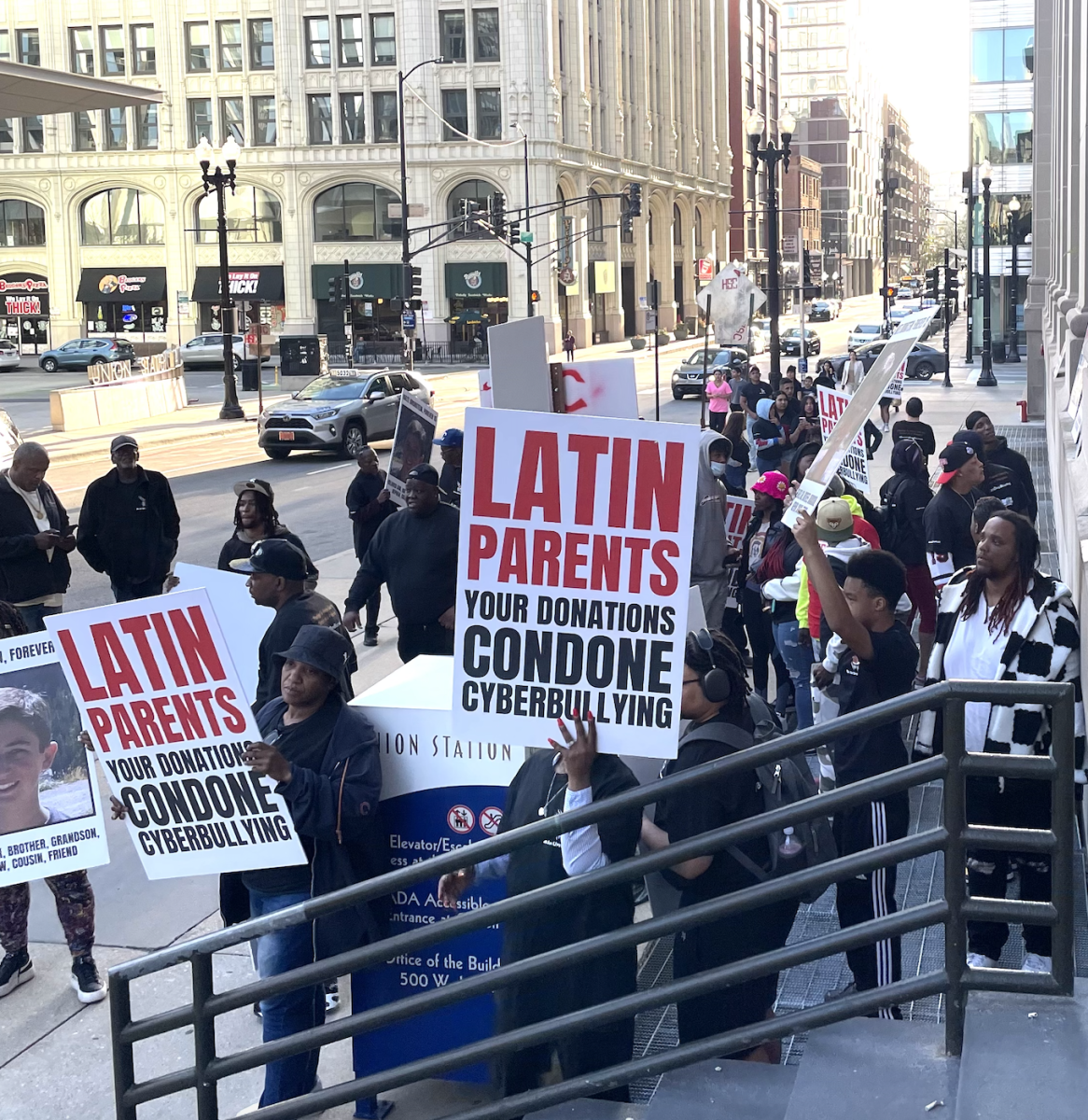Iz Gius As fall approaches, with tank tops and shorts quickly being replaced by thick sweaters and long pants, it seems strange to be talking about Latin’s dress code yet again. But despite my announcement with Mr. Coberly a couple weeks ago, there’s still much to be said about our dress guidelines, the sexism therein, and what exactly changed this school year. Last semester I took a GOA (Global Online Academy) course on Gender Studies. The topic of Latin’s online school partnership is enough for an entire article in itself, so I won’t go into too much detail about the class and my experience— but as my cumulative, end-of-semester project, I was given the unique task of creating a gender equality initiative within my local community. Restructuring Latin’s dress code was one of the first ideas to pop into my mind; I had seen plenty of Tumblr posts and news articles about teenage girls challenging their school’s restrictions on what clothing they could and could not wear. And although I myself have never been dress-coded or forced to change, many of my peers and friends have been reprimanded and embarrassed for showing their midriff, shoulders, or other “distracting” parts of their bodies (but more on that later). I began with a quick news search and a poll of some of the girls around me. What I found was encouraging: women all over the world, in high schools, middle schools, and universities, were challenging their administrations and demanding that they no longer be targeted. In addition, nearly all of my female peers had been dress-coded (or at the very least, had consciously chosen not to wear something to school in fear of getting in trouble), and mostly by male teachers. All of the terms I had been discussing in my GOA—patriarchy, femininity, rape culture—culminated in this one close-to-home issue. My problems with Latin’s previous dress code were twofold: the official language in the Handbook was discriminatory, as well as the enforcement. The Student Handbook banned any clothing that was “a distraction to students, faculty, or staff,” and offenders could receive “escalating disciplinary consequences including detention, probation or suspension.” And what exactly constitutes “distracting” clothing? The old dress code went on to list examples like “clothing which is too tight or too revealing” and “bare midriffs.” In very few words, the dress code was unequal. It uniquely targeted female students and labeled their bodies as a “distraction” to those around them. When girls would wear athletic clothing, show their shoulders, or reveal their midriff, they were blamed, received warnings, and were asked to change. Boys, on the other hand, regularly got away with wearing athletic-wear and were largely exempt from any regulation. There was ample room for change. So I put together a proposal, written statement, and video, submitted it to my GOA teacher, and left for summer vacation. I intended to talk to the Upper School administration, but not until the beginning of the next school year. However, after seeing a comment about my dress code initiative on my end-of-semester evaluation, Mr. Graf, the former Upper School Director, reached out to me. My email exchange with him soon became one with Mr. Coberly, who was immediately on board with the changes that I suggested. After many emails and a couple of meetings, he finalized the changes to the student handbook—and the rest is history. Our new dress code removes the phrase “distracting” entirely, only banning clothing which is inappropriate for school—things like visible underwear, references to drugs and alcohol, etc. The only remaining restrictions seem to me to be common sense. And although there’s not much I can do to remove bias in enforcement, I’m hoping the new restrictions will be clearer to faculty and staff, and that female students can now stand up for themselves and their own decisions about clothing and their bodies. For more information on the new and improved dress guidelines, check out page 22 of the handbook.]]>





































snguyen • Oct 20, 2015 at 1:58 pm
Retweet
Henry Markarian • Oct 2, 2015 at 3:46 pm
As I mentioned in the previous post, I have a question. Did this code previously solely mention women? Would I be able to show my midriff or shoulders under this past code? If yes, then I believe that would be legitimately sexist, but I cannot imagine that if it affected both sexes equally.
igius • Oct 2, 2015 at 6:06 pm
Hey Henry! I’m sorry for not responding to your comment on the previous post- I didn’t see it until now. You bring up a valid point. No, the previous dress code didn’t explicitly mention women; if you were to show your midriff or shoulders, you would have (or should have, according to the old handbook) been dress coded. But the fact is, male students didn’t show up to school wearing those kinds of clothing. I have never in my three years at Latin seen a guy show up to school wearing a crop top, spaghetti straps, or anything of the sort. Female students were the only ones wearing clothing deemed “distracting”, and they were the only ones getting dress coded- before I started my GOA project, I talked to my friends and peers, and found that girls at Latin were getting dress coded exponentially more times than boys (and even then, it was only because male students were wearing athletic clothing or sweatpants, never because their clothing was too revealing).
That’s a very long-winded way to say no. But just because the old dress code didn’t specifically mention women, it targeted clothing that only female students would wear, affected almost entirely female students, and was certainly “legitimately sexist”.
-Iz
Henry Markarian • Oct 19, 2015 at 5:27 pm
Wow. There should really be an email-on-response feature for this blog. I thought you had just ignored my comment, but I was proven wrong.
This brings me to ask, why do men dress more modestly? I may have worded this wrong, but it always seems to me that many men are reluctant to show skin, while the opposite is true with the other sex. What could he reason for this be?
And about the sexism of this situation,I could liken this to an old anecdote about two animals. One liked climbing trees, and the other didn’t. One day, the animals were both forbidden from climbing trees. Obviously, one animal was affected more, but does that make the treatment unfair? In that sense, does holding an unwavering law that may affect more of one group than another make the rule sexist or prejudiced? I’d like your honest opinion on this subject, as I’m quite interested in this subject.
igius • Oct 20, 2015 at 9:53 am
Good idea about the email-on-response feature– I’ll see if we can figure out how to do that on here!
I can’t say I know exactly why men tend to dress more “modestly”. Perhaps it’s just their inherent superiority and class (but seriously, it probably has something to do with our society’s message to women that they are only valuable if they are sexualized, or our constant objectification of female bodies). But that’s a completely separate question, I think, from Latin’s dress code.
I would argue that such a law (like the one against climbing trees that you mentioned) is completely unfair. Just as an example, consider many of the voting restrictions during the early 20th century in the Deep South. Things like literacy and property tests, which required people to be literate and own a certain amount of land in order to vote, wouldn’t be prejudiced at all by your reasoning. Yes, in theory the law was unwavering, but in reality it affected black Americans exponentially more than white Americans, and was just another way to keep them away from the ballot boxes without outright discrimination. I would argue, and I feel that much of the historical community would feel the same that these laws were undoubtedly prejudiced and racist. By the same token, Latin’s old dress code (and dress codes targeting women in general) was certainly sexist.
If you’re interested in continuing this conversation outside of the comments section, let me know! This could be a really interesting topic to discuss with a larger group, as well.